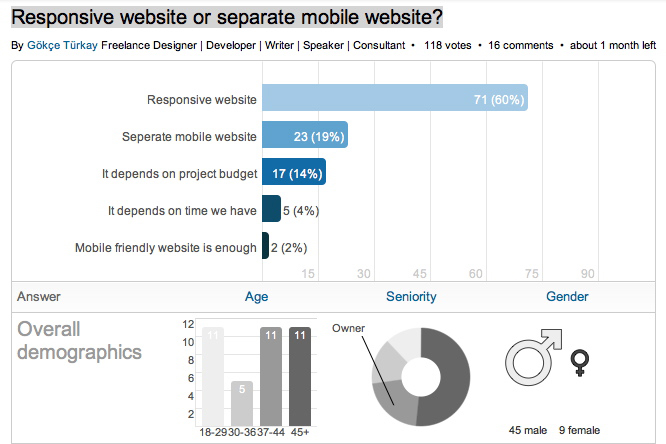
Science of Studying, a guest blog post and infographic by Aubree Ritter. http://www.besteducationdegrees.com/the-science-of-study/

The “Why” questions are important part of design: Why are we building this product? Why would users want it? Why us? Why now? Why this technology? The value of any question asked during the design process is in how the answer to that question helps advance the project; or help the design group bond; or reveal a significant insight into the problem that the group is trying to solve; or help clarify the use scenario; etc. All such questions are about moving the project forward. But it is easy to get sidetracked here, and I saw just that at the NIH biomedical research design brainstorming meeting. Before I proceed, let me describe a bit of background research and give a concrete example when the wrong answer to the Why question jeopardizes the design solution. About ten years ago now, we were asked to design a set education materials for the San Francisco Zoo. The problem was lack of structure for school visits. San Francisco public schools allow all elementary school children to visit the city zoo once a year. That’s a lot of school children…and a lot of visits per kid. But do these students learn anything during these visits?…

Nudging is a form of social engineering — a way of designing system constraints and support structures to encourage the majority of people to behave in accordance with your plan. Here’s a famous-in-my-classroom example of nudging: Opt-in versus Opt-out Consent Solutions There are many examples of such social engineering. During our breakout groups at the NIH think tank on the future of citizen participation in biomedical research, I raised the difference between opt-in versus opt-out option results for organ donation. In some countries in Europe, citizens have to opt-out from donating their organs in a case of a tragic accident — they have to do something to NOT donate their organs. As the result in Austria — which has an opt-out system — the donation rate is 99.98%! While in Germany — which has an opt-in system — only 12% will their organs for transplants. This is a huge difference in consent between very similar populations of people. Unintended Consequences of Social Design Not all social engineering efforts go as well as opt-in/opt-out organ donation systems. To reduce pollution for the 2008 Summer Olympic Games in Beijing, the Chinese government established the even/odd license plate law: cars with even license…

Imagine your were given an assignment to develop a product that could help people eat healthy. How would you go about creating such a thing? What would you need to learn/understand? What is the right medium or technology vehicle for such a product? How would you even start? Below is a very brief outline of how to get started and the key tools necessary for the job. Project Goals The first order of business is figuring out the business needs and goals: What is the product really supposed to do? You have to ask this even if you are the one who is the client on this project. But, most probably, you are working for someone else — the client — and you have to start by understanding what your client really wants to do. You can do that in several ways: Analyzing the Request for Proposals: On many such projects, there will be an initial document, something like an RFP, that outlines the business goals and desires of the client. While some RFPs are very detailed and fully fleshed out, most are not. There are many reasons for this. Some clients are worried someone will “steal” their ideas and…

The Math Obstacle In the past few years, reports came out showing strong correlation between failing Algebra and graduation rates — if a kid fails math, he/she won’t be getting their high school diplomas. Here are a few articles describing the studies: “Is Removing Algebra a Key to Reform?” by Daniel Duerden, August 13, 2012 “A Comprehensive Study of the Predictors of High School Outcomes: Why Some Students Graduate on Time While Others Drop Out”. “A Correlation Study of Accuplacer Math and Algebra Scores and Math Remediation on the Retention and Success of Students in the Clinical Laboratory Technology Program at Milwaukee Area Technical College” by James Manto, August 2006. “Is high school tough enough: Full report” by The Center for Public Education. There are many more… Some suggested that based on evidence, we might just want to drop the math curriculum from high school graduation requirement — if there’s a strong correlation, perhaps by removing math, we might remove the problem and more kids graduate. Obviously, I don’t think that this a great solution. But I do come across the math problem a lot as part of the educational evaluations I do in my small practice. What I see…

Frost, B. (2012). “Separate Mobile Website Vs. Responsive Website.” smashingmagazine.com. Visited on October 25, 2012: http://mobile.smashingmagazine.com/2012/08/22/separate-mobile-responsive-website-presidential-smackdown/ This article is about how to address the challenges of the mobile web by either creating a separate mobile website or creating a website that is responsive to different screen sizes. These two approaches are illustrated by the websites of the 2012 presidential candidates: Mitt Romney’s campaign has created a dedicated mobile website, while Barack Obama’s campaign has created a responsive website. The article looks at two use cases for these sites (someone looking for information and someone looking to take action) and how each of the different mobile approaches addresses them. Conceptual Design The article examines two mobile design approaches using Kristofer Layon’s model, which is based on Maslow’s hierarch of needs pyramid. Primary access and navigation are the most essential aspects of the mobile experience while enhancements like HTML 5 features are the least essential. How each method addresses the two mobile approaches is important for any product designer. Interaction Design Access to website content is the most import function of a mobile site. The Obama site is responsive, so all the content of the full-featured site is available to a mobile…